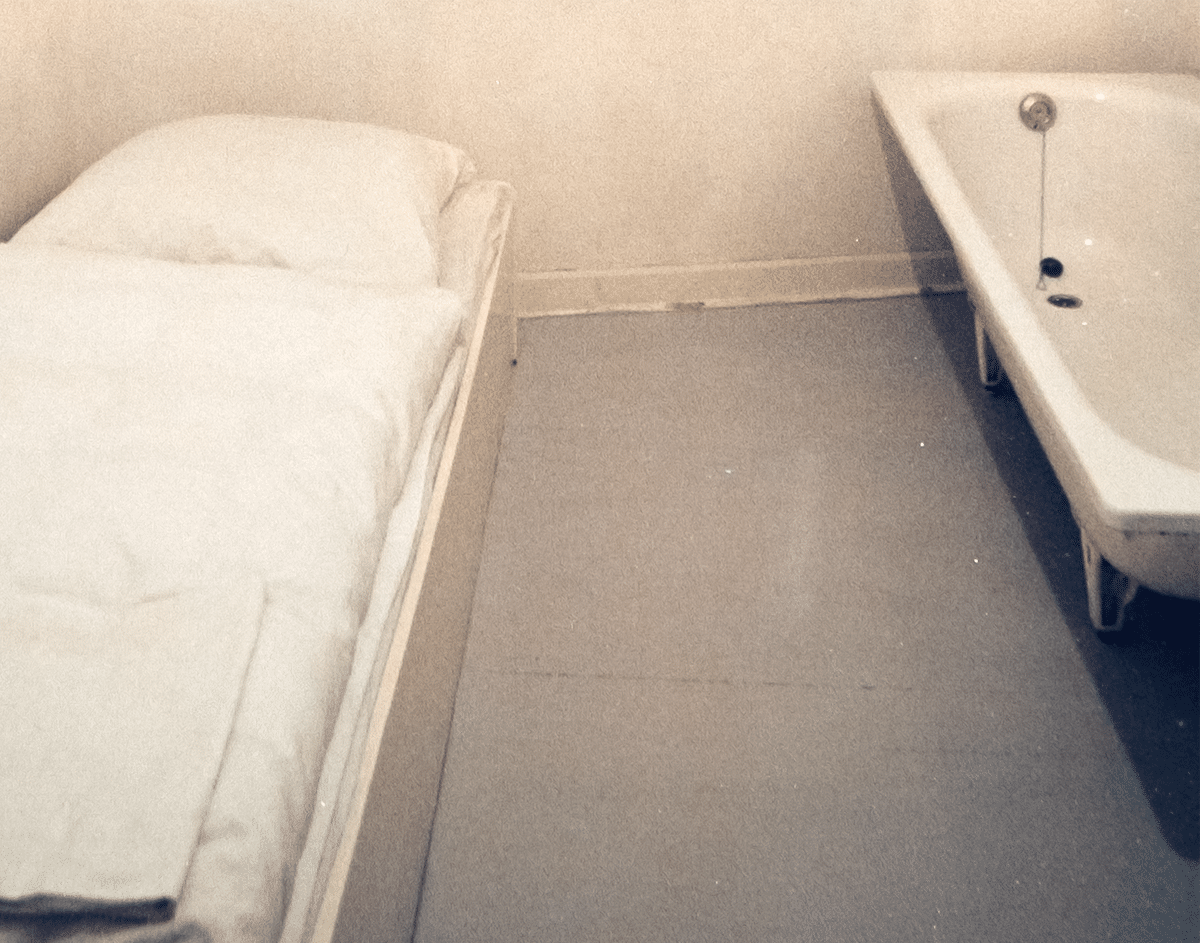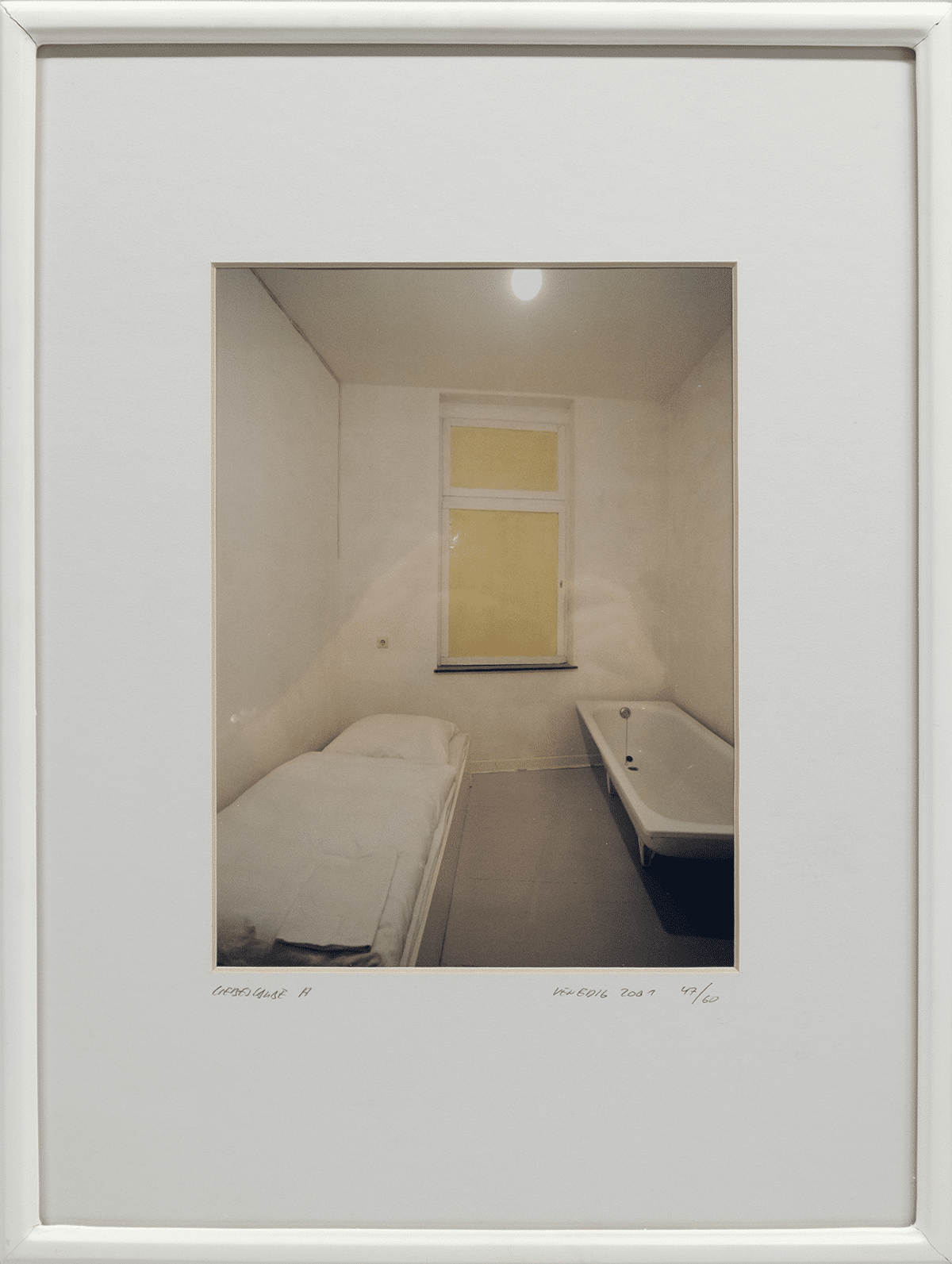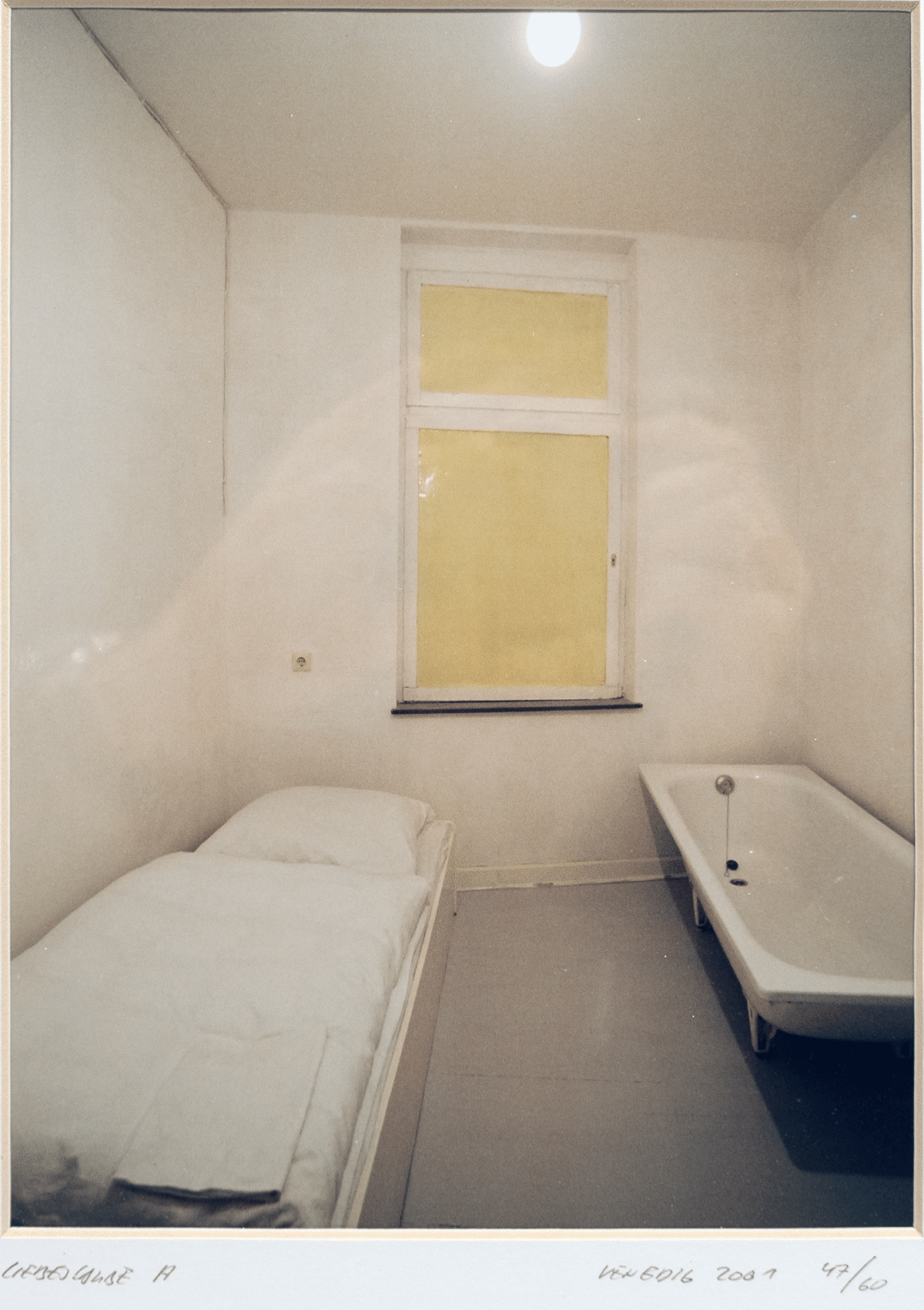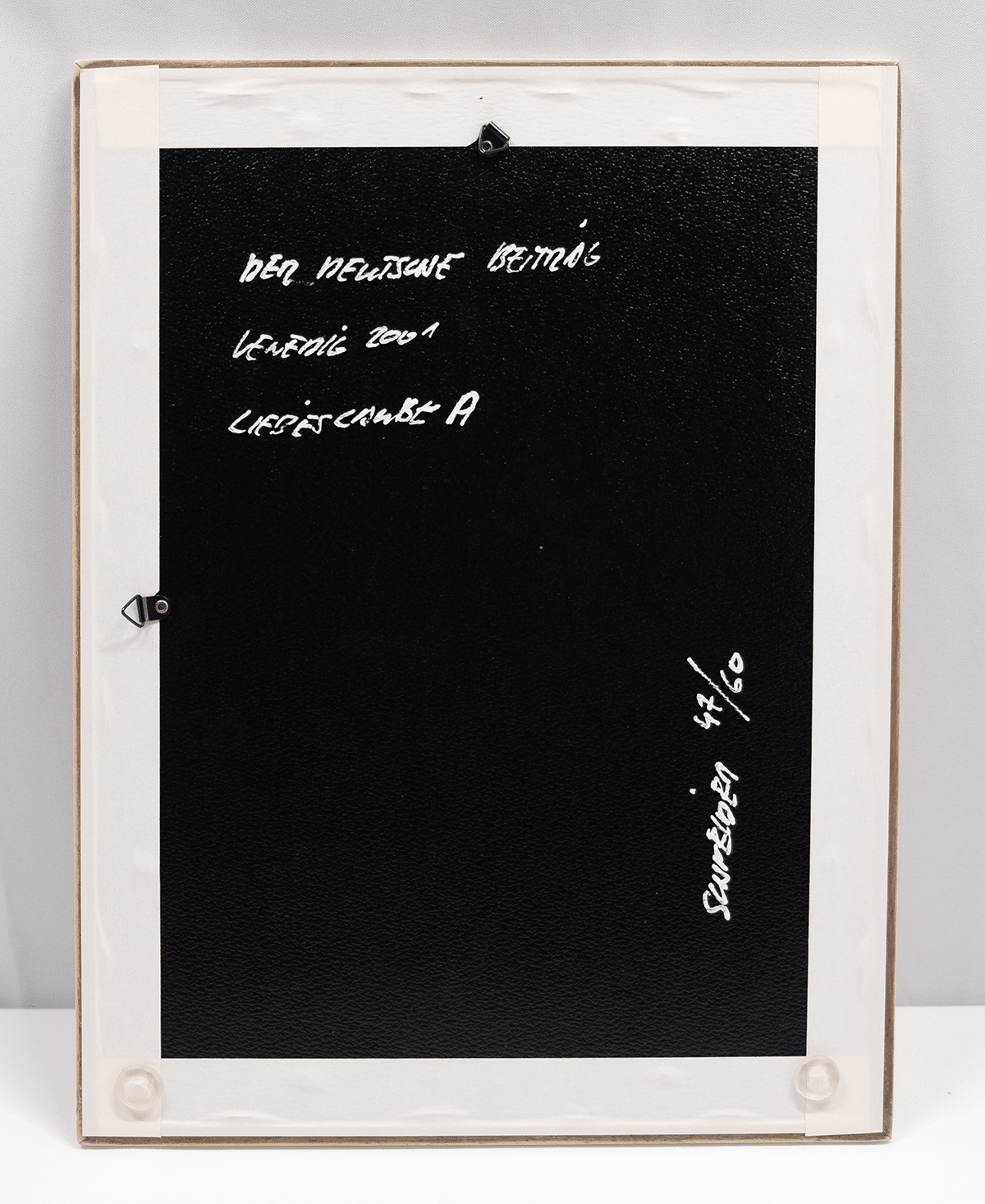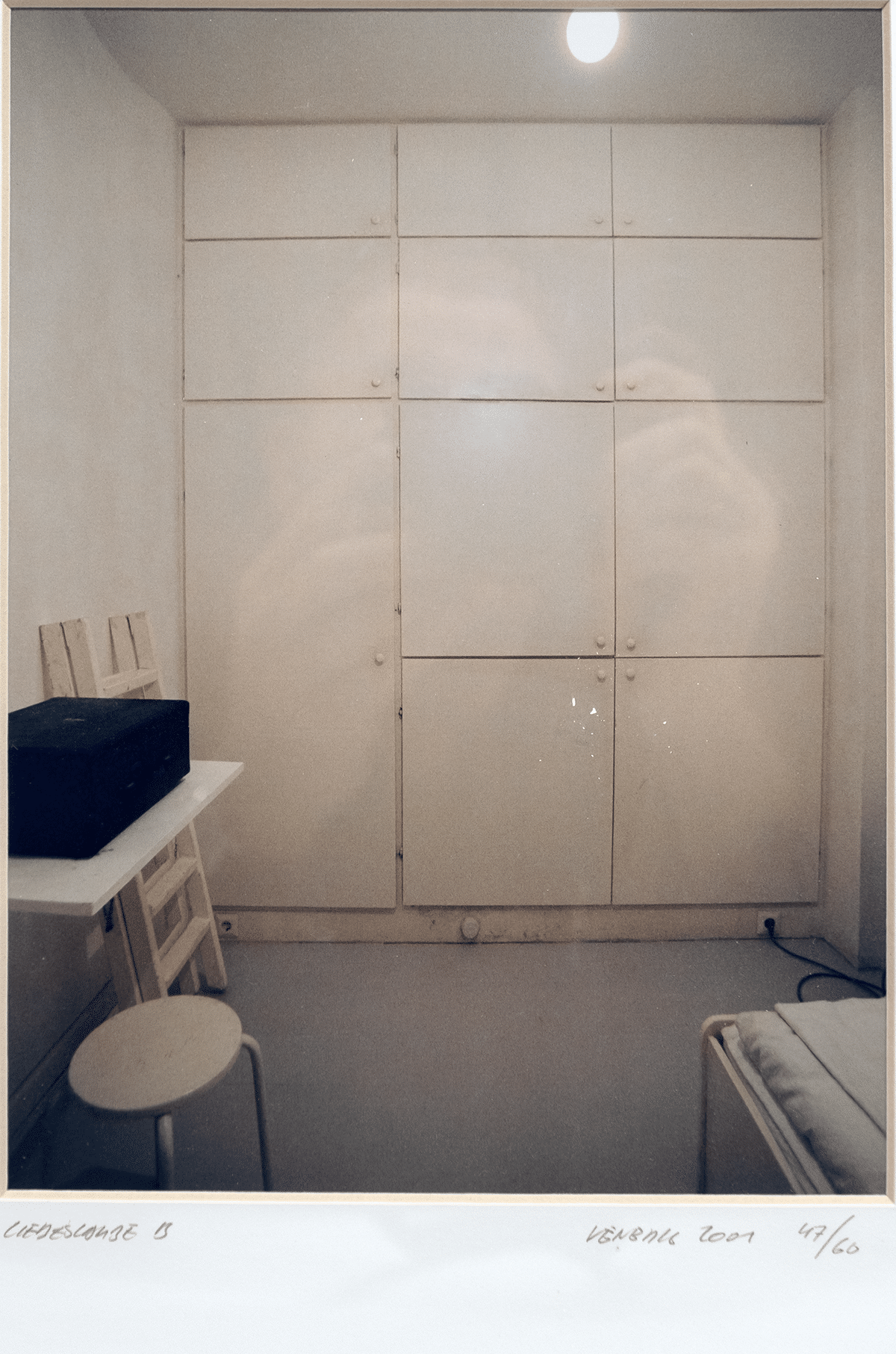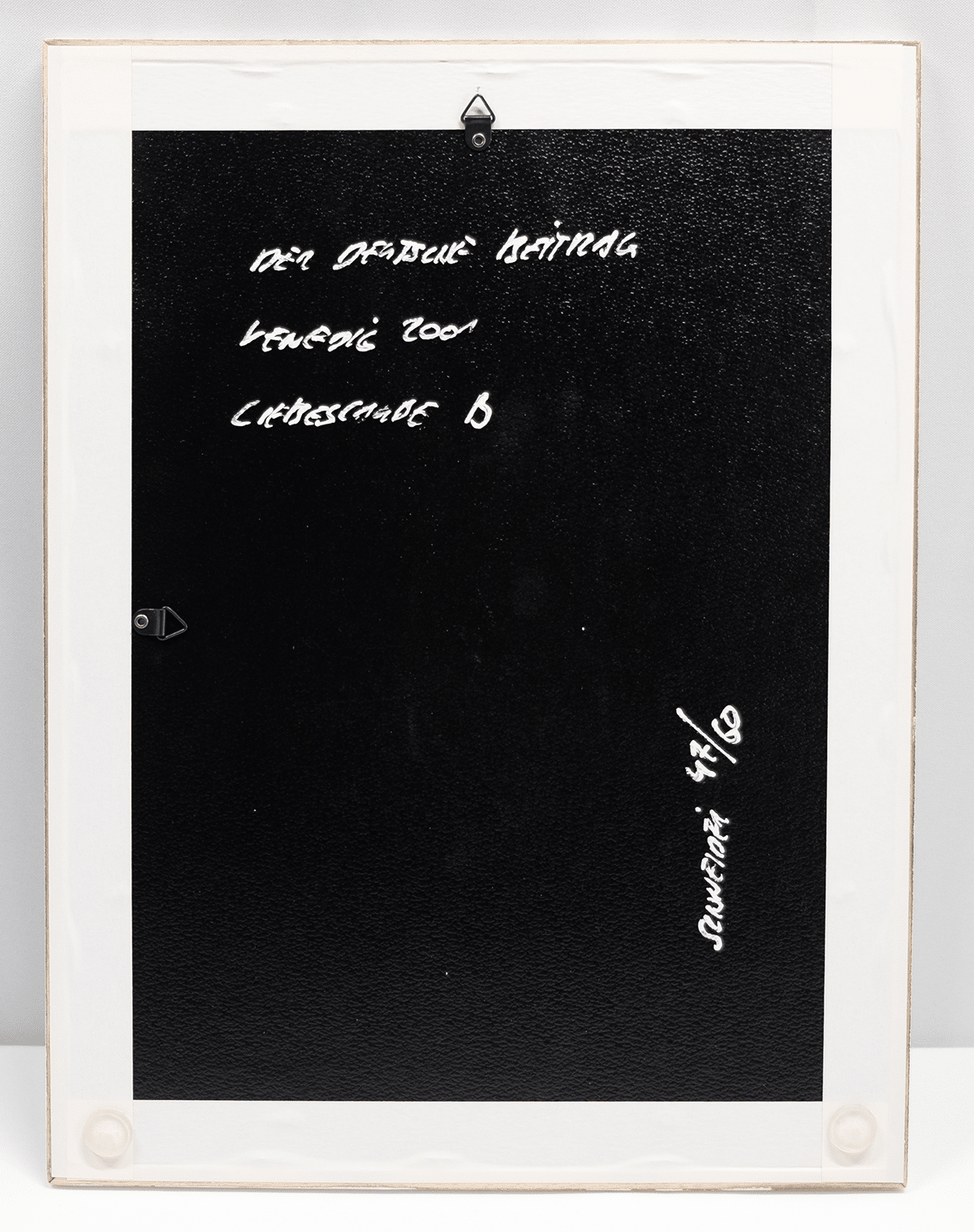Liebeslaube (love nest) was located in Haus u r. It is described as a "room within a room made of wood and block board, 1 window, 1 lamp, 1 bathtub, 1 bed, 1 heater, 1 kitchen cabinet, gray wood floor, walls and ceiling plastered white, 416 cm long, 285 cm wide, 315 cm high, Rheydt Germany, 1985-2001." If one had crawled into the house through a hole in a wall one could see: a bed and bathroom, a stove, a tea set, plates with an Italian language course. They could be the props of a story. But what story? And where is love in this hideaway? One question leads to the next. And soon the questions become existential: What is space? What is time ( https://www.deutschlandfunk.de/programm?drsearch:date=2020-08-30).
Color photographs A and B. 2001. Signed and numbered 47/60 on the reverse. Published by Parkett Verlag, Zurich. Size photos ca 17*23 cm, dimensions frame, with handmade passe-partouts by Schneider, ca 32*42 cm.
Back to offer overview
Biography
Gregor Schneider (1969)
Gregor Schneider studied at the art academies of Düsseldorf, Münster and Hamburg from 1989 to 1992. He works with Räumen, which he conceives as three-dimensional, walk-in sculptures. He begins doing so in 1985 in an abandoned residential house in Rheydt (Mönchengladbach) on the site of a factory belonging to his family; Haus u r (the abbreviation u r comes from Unterheydener Strasse in Rheydt, the address of the house) which he continuously rebuilds until 2001. A house whose interior structure he reconstructed, with rooms within rooms, windows for windows, walls for walls, floors on top of floors, etc. rejecting the pretense of architecture to provide durability. He also used motors to make ceilings or entire rooms move slowly and imperceptibly. Kaffeezimmer from 1993 had a turning mechanism under the floor that made the room rotate imperceptibly around itself. Some rooms were inaccessible because they were behind walls such as 1995’s Total Isoliertes Gästezimmer. All over the house were blind windows and false doors, the house was a cross between a petty bourgeois dwelling, squat, bachelor flat, haunted house, etc. For visitors, it evoked feelings of alienation and fear
At the 2001 Venice Biennale, the rooms of Haus u r were constructed over a period of more than three months in the German pavilion under the title Totes Haus u r. A total of 24 rooms were transported by ship from Rheydt to Venice (a total weight of 150 tons). The rooms, which until then had been visited by a few guests under Schneider’s direction and commentary, became an attraction for a large audience. The title Totes Haus u r refers to the objectification of Haus u r, with the installation at the Biennale 16 years of a way of life was objectified. The rooms from the Haus u r were reconstructed in another location; for Schneider, this made it the Totes Haus u r. The house in Venice was open for viewing when life had left it: the rooms were full of clues to a life that had taken place there. The rooms and their furnishings were an oppressive image of German misery, a ruin of bourgeoisness, a metaphor for disorientation.
In 2014 Schneider, alarmed by growing nationalism and neo-Nazism in Germany, buys the birthplace of Joseph Goebbels. Schneider decides to present the house as a clone of Haus u r. Immediately after the purchase, he begins to destroy the house, completely removing the inside and the house became an empty shell. In doing so, he removes the symbolic value of the house, only the empty carcass remains; the spirit of the Nazi era has been expelled. In November 2014, the remnant of Goebbels’ house was loaded into a truck and taken to Warsaw, where it was parked in front of Zachęta, the National Gallery of Art, for an exhibition by Schneider. At Zachęta, Schneider showed four projections showing him drinking soup and sleeping in a bed in Goebbels’ house, Goebbels’ house when it was empty and the process of its dismantling. Videos similar to those in which he filmed himself going through the hidden rooms, the escape routes, of Haus u r. The video footage shows the connection between the two houses.
For Totes Haus u r, his best-known work to date, Schneider received the Golden Lion at the Biennale in 2001.
Information from:
https://de.wikipedia.org/wiki/Gregor_Schneider
https://www.dewitteraaf.be/artikel/gregor-schneider-tote-raume/
https://artreview.com/april-2015-feature-gregor-schneider/

